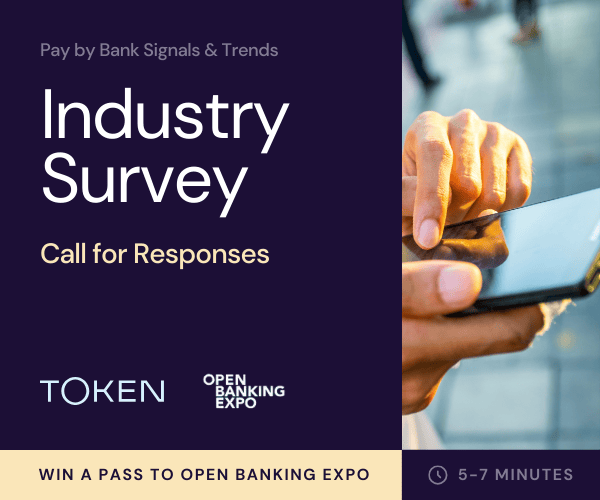At Open Banking Expo Canada 2025, a Powerhouse Debate titled ‘Open Banking & API banking: Unlocking the future of financial services’ brought together senior technology and business leaders from Canada’s top banks to explore what it will take to move Open Banking from policy promise to practical reality.
Moderated by Subramanian Viswanathan, associate vice president and FS practice head at Iris Software, the panel featured Maureen Di Sebastiano, vice president, Open Banking at TD Bank, Kaustubh Srivastava, head of US digital technology at BMO, Shekher Puri, vice president, digital components and platforms at RBC, and Manpreet Singh, head of engineering at Scotiabank.
Together, they offered a candid and highly technical discussion for a room packed with financial professionals, regulators, and fintech executives.
Open Banking: from concept to capability
The tone was set early by Di Sebastiano, who framed Open Banking as fundamentally consumer-focused. “I think Open Banking, simply, is Canadians being empowered to use their financial data to make their lives better,” she said. While customers stand to benefit most, she stressed that the ecosystem – including banks and fintechs – must align to generate win-win-win outcomes.
Srivastava of BMO argued that Open Banking is not about “opening the vault” but “opening the value”. He pointed to the end of screen scraping and the rise of secure APIs as a central shift that will enable more secure, real-time data flows for customers and institutions alike.
Puri of RBC echoed this view, stating that Open Banking will “supercharge” existing digital offerings and unlock new value pools. He noted that platform evolution must be API-first and event-driven, with reusable components like consent management and notification services built in to accelerate delivery and maintain security across channels.
Singh of Scotiabank added that while much groundwork has been laid in terms of mobile-first infrastructure and API architecture, true transformation will hinge on aligning internal capabilities – across engineering, strategy, risk and delivery – to support seamless customer experiences across institutions.
Standardisation: the gateway to scale
A key theme that emerged was the need for industry-wide standardisation. Puri identified OAuth and OIDC as critical building blocks for authentication and authorisation, while warning about the risks of bespoke integrations.
Srivastava added that external-facing APIs must meet the same rigorous standards of availability and security as online banking platforms. With the unpredictability of third-party traffic once APIs go live, banks must prepare for dynamic scaling and reinforce cyber defences to prevent DDoS attacks and maintain system integrity.
Singh highlighted the technical challenges of consent management at scale. He explaied that it’s not just about giving consent – it’s about managing it at a granular level and that customers need clear visibility into what data they’re sharing, with whom, and how to revoke access easily.
Beyond compliance: architecting for innovation
While much of Canada’s Open Banking conversation has been regulatory in nature, panellists emphasised that innovation – not just compliance – must be the driving force.
Di Sebastiano said it requires cultural change – from risk teams to product managers.
According to Singh, building modular APIs is only the beginning. Orchestrating them into real-time digital experiences requires tight integration across platforms – both inside the bank and with external partners. This means creating seamless transitions between bank applications and fintech tools, while maintaining a consistent user experience.
Puri called for investment in developer experience as well. He said that if we want third parties building on our APIs, we need robust developer portals with sandbox environments, automated onboarding, clear documentation – and fast feedback loops.”
The customer comes first
Despite the technical focus, all panellists agreed that trust must remain at the centre of Open Banking. Customers need to know someone has their back when something goes wrong, according to Di Sebastiano. She warned that without visible value for end users – and safeguards when things go wrong – adoption would remain low.
Singh added that hyper-personalisation must be handled carefully. “So how do we manage that fine balance between being just the right level of intrusive with bringing value? If we are less intrusive, then we may not be able to add that much value to it as well,” he noted.
Srivastava pointed out that rich data sharing can enable better lending decisions for small businesses and more accurate credit models for consumers – unlocking economic value across sectors like insurance, healthcare, tourism and beyond.
Lightning round: what must happen next?
The session concluded with a rapid-fire round where each panellist shared what they believe must happen in the next 12 months to accelerate Open Banking:
-
Di Sebastiano: “Data flowing through APIs in Canada.”
-
Srivastava: “Aggregators coming through proper channels.”
-
Puri: “Continued regulatory momentum.”
-
Singh: “Customer education.”
Open Banking: poised for lift-off?
As Canada awaits further regulatory clarity and a fully defined implementation roadmap, one thing became clear during this debate: banks are no longer standing still. From architecting scalable API platforms to building internal alignment across risk and engineering teams, Canada’s largest financial institutions are laying the groundwork for an Open Banking future.
Yet challenges remain – from educating consumers and stakeholders to ensuring standardisation and security across a fragmented ecosystem. What’s needed now is decisive regulatory action paired with industry-wide coordination.
Viswanathan concluded: “The journey, as you move from idea, to impact and compliance to capability, hopefully Open Banking is not far away.”
For now, all eyes are on Ottawa – and on whether Canada will seize the opportunity to lead in consumer-directed finance or risk falling behind.
Further reading: Canada’s Open Banking future hinges on collaboration, standards and trust











